Dr. V.K.Maheshwari, M.A. (Socio, Phil) B.Sc. M. Ed, Ph.D.
Former Principal, K.L.D.A.V.(P.G) College, Roorkee, India
Mrs Sudha Rani Maheshwari, M.Sc (Zoology), B.Ed.
Former Principal. A.K.P.I.College, Roorkee, India
I love you when you bow in your mosque, kneel in your temple, pray in your church. For you and I are sons of one religion, and it is the spirit.
If we define religion as the worship of supernatural forces, we must observe at the outset that some peoples have apparently no religion at all. Such cases are exceptional, and the old belief that religion is universal is substantially correct. To the philosopher this is one of the outstanding facts of history and psychology; he is not content to know that all religions contain much nonsense, but rather he is fascinated by the problem of the antiquity and persistence of belief.
The Sources of Religion
Fear and Wonder-
Fear, as Lucretius said, was the first mother of the gods. Fear, above all, of death. Primitive life was beset with a thousand dangers, and seldom ended with natural decay; long before old age could come, violence or some strange disease carried off the great majority of men. Hence early man did not believe that death was ever natural; he attributed it to the operation of supernatural agencies.
Fear of death, wonder at the causes of chance events or unintelligible happenings, hope for divine aid and gratitude for good fortune, cooperated to generate religious belief. Wonder and mystery adhered particularly to dreams, and the mysterious influence of heavenly bodies upon the earth and man.
Dreams and the Soul Animism-
Primitive man marvelled at the phantoms that he saw in sleep, and was struck with terror when he beheld, in his dreams, the figures of those whom he knew to be dead. He buried his dead in the earth to prevent their return; he buried victuals and goods with the corpse lest it should come back to curse him.
Such experiences convinced early man that every living thing had a soul, or secret life, within it, which could be separated from the body in illness, sleep or death. “Let no one wake a man brusquely,” said one of the Upanishads of ancient India, “for it is a matter difficult of cure if the soul find not its way back to him.”" Not man alone but all things had souls; the external world was not insensitive or dead, it was intensely alive; if this were not so, thought primitive philosophy, nature would be full of inexplicable occurrences, like the motion of the sun, or the death- dealing lightning, or the whispering of the trees. The personal way of conceiving objects and events preceded the impersonal or abstract; religion preceded philosophy.
The Objects of Religion
Since all things have souls, or contain hidden gods, the objects of religious worship are numberless. They fall into six classes:
1) Celestial
2) Terrestrial
3) Sexual
4) Animal,
5) Human,
6) Divine.
To the primitive mind mountains, rivers, rocks, trees, stars, sun, moon and sky are sacra mentally holy things, because they are the outward and visible signs of inward and invisible souls. Of course we shall never know which of our universe of objects was worshiped first.
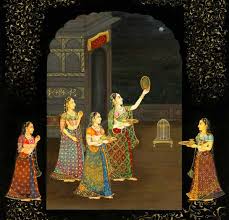 One of the first was probably the moon. In west folk-lore speaks of the “man in the moon,” so primitive legend conceived the moon as a bold male who caused women to menstruate by seducing them. He was a favourite god with women, who worshiped him as their protecting deity. The pale orb was also the measure of time; it was believed to control the weather, and to make both rain and snow; even the frogs prayed to it for rain.
One of the first was probably the moon. In west folk-lore speaks of the “man in the moon,” so primitive legend conceived the moon as a bold male who caused women to menstruate by seducing them. He was a favourite god with women, who worshiped him as their protecting deity. The pale orb was also the measure of time; it was believed to control the weather, and to make both rain and snow; even the frogs prayed to it for rain.
 We do not know when the sun replaced the moon as the lord of the sky in primitive religion. Perhaps it was when vegetation replaced hunting, and the transit of the sun determined the seasons of sowing and reaping, and its heat was recognized as the main cause of the bounty of the soil.
We do not know when the sun replaced the moon as the lord of the sky in primitive religion. Perhaps it was when vegetation replaced hunting, and the transit of the sun determined the seasons of sowing and reaping, and its heat was recognized as the main cause of the bounty of the soil.
Then the earth became a goddess fertilized by the hot rays, and men worshiped the great orb as the father of all things living. From this simple beginning sun-worship passed down into the pagan faiths of antiquity, and many a later god was only a personification of the sun The Middle Ages kept a relic of sun-worship in the halo pictured around the heads of saints, and in our own day the Emperor of Japan is regarded by most of his people as an incarnation of the sun- god. There is hardly any superstition so old but it can be found flourishing somewhere today.
 Like the sun and the moon, every star contained or was a god, and moved at the command of its indwelling spirit. These spirits became guiding angels, star-pilots. The sky itself was a great god, worshiped devotedly as giver and withholder of rain. (as Lord Varun in India ) Among many primitive peoples the word for god meant sky. Among the Mongols the supreme god was Tengri the sky; in China it was Tz the sky; in Vedic India it was Dyaus pitarthe “father sky”; among the Greeks it was Zeus the sky, the “cloud-compeller”; among the Persians it was Ahura the “azure sky”; and among ourselves men still ask “Heaven” to protect them. The central point in most primitive mythology is the fertile mating of earth and sky.
Like the sun and the moon, every star contained or was a god, and moved at the command of its indwelling spirit. These spirits became guiding angels, star-pilots. The sky itself was a great god, worshiped devotedly as giver and withholder of rain. (as Lord Varun in India ) Among many primitive peoples the word for god meant sky. Among the Mongols the supreme god was Tengri the sky; in China it was Tz the sky; in Vedic India it was Dyaus pitarthe “father sky”; among the Greeks it was Zeus the sky, the “cloud-compeller”; among the Persians it was Ahura the “azure sky”; and among ourselves men still ask “Heaven” to protect them. The central point in most primitive mythology is the fertile mating of earth and sky.
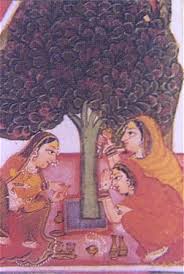 For the earth, too, was a god, and every main aspect of it was presided over by some deity. Indians believe that some trees had souls quite as much as men, and it was plain murder to cut them down; the North American Indians sometimes attributed their defeat and decay to the fact that the whites had levelled the trees whose spirits had protected the Red Men. In the Molucca Islands blossoming trees were treated as pregnant; no noise, fire, or other disturbance was permitted to mar their peace; else, like a frightened woman, they might drop their fruit before time. In Amboyna no loud sounds were allowed near the rice in bloom lest it should abort into straw. The ancient Gauls worshiped the trees of certain sacred forests; and the Druid priests of England reverenced as holy that mistletoe of the oak which still suggests a pleasant ritual. The veneration of trees, springs, rivers and mountains is the oldest traceable religion of Asia.
For the earth, too, was a god, and every main aspect of it was presided over by some deity. Indians believe that some trees had souls quite as much as men, and it was plain murder to cut them down; the North American Indians sometimes attributed their defeat and decay to the fact that the whites had levelled the trees whose spirits had protected the Red Men. In the Molucca Islands blossoming trees were treated as pregnant; no noise, fire, or other disturbance was permitted to mar their peace; else, like a frightened woman, they might drop their fruit before time. In Amboyna no loud sounds were allowed near the rice in bloom lest it should abort into straw. The ancient Gauls worshiped the trees of certain sacred forests; and the Druid priests of England reverenced as holy that mistletoe of the oak which still suggests a pleasant ritual. The veneration of trees, springs, rivers and mountains is the oldest traceable religion of Asia.
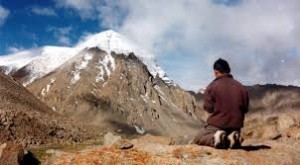 Many mountains were holy places, homes of thundering gods. Earthquakes were the shoulder- shrugging of irked or irate deities: the Fijians ascribed such agitations to the earth-god’s turning over in his sleep; and the Samoans, when the soil trembled, gnawed the ground and prayed to the god Mafuie to stop, lest he should shake the planet to pieces. Almost everywhere the earth was the Great Mother; our language, which is often the precipitate of primitive or unconscious beliefs, suggests to this day a kinship between matter (materia) and mother (mater), whose fertility constituted the bounty of the fields; their birth and marriage, their death and triumphant resurrection were conceived as the symbols or causes of the sprouting, the decay, and the vernal renewal of all vegetation. The deities reveal by their gender the primitive association of agriculture with woman. When agriculture became the dominant mode of human life, the vegetation goddesses reigned supreme. Most early gods were of the gentler sex; they were superseded by male deities presumably as a heavenly reflex of the victorious patriarchal family .”
Many mountains were holy places, homes of thundering gods. Earthquakes were the shoulder- shrugging of irked or irate deities: the Fijians ascribed such agitations to the earth-god’s turning over in his sleep; and the Samoans, when the soil trembled, gnawed the ground and prayed to the god Mafuie to stop, lest he should shake the planet to pieces. Almost everywhere the earth was the Great Mother; our language, which is often the precipitate of primitive or unconscious beliefs, suggests to this day a kinship between matter (materia) and mother (mater), whose fertility constituted the bounty of the fields; their birth and marriage, their death and triumphant resurrection were conceived as the symbols or causes of the sprouting, the decay, and the vernal renewal of all vegetation. The deities reveal by their gender the primitive association of agriculture with woman. When agriculture became the dominant mode of human life, the vegetation goddesses reigned supreme. Most early gods were of the gentler sex; they were superseded by male deities presumably as a heavenly reflex of the victorious patriarchal family .”
Just as the profound poetry of the primitive mind sees a secret divinity in the growth of a tree, so it sees a supernatural agency in the conception or birth of a child. The “savage” does not know anything about the ovum or the sperm; he sees only the external structures involved, and deifies them; they, too, have spirits in them, and must be worshiped, for are not these mysteriously creative powers the most marvelous of all? In them, even more than in the soil, the miracle of fertility and growth appears; there- fore they must be the most direct embodiments of the divine potency.
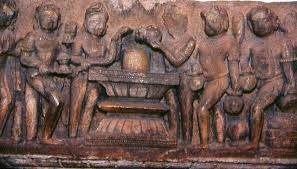 Nearly all ancient peoples worshiped sex in some form and ritual, and not the lowest people but the highest expressed their worship most completely; we shall find such worship in Egypt and India, Babylonia and Assyria, Greece and Rome. The sexual character and functions of primitive deities were held in high regard, not through any obscenity of mind, but through a passion for fertility in women and in the earth. Certain animals, like the bull and the snake, were worshiped as apparently possessing or symbolizing in a high degree the divine power of reproduction.
Nearly all ancient peoples worshiped sex in some form and ritual, and not the lowest people but the highest expressed their worship most completely; we shall find such worship in Egypt and India, Babylonia and Assyria, Greece and Rome. The sexual character and functions of primitive deities were held in high regard, not through any obscenity of mind, but through a passion for fertility in women and in the earth. Certain animals, like the bull and the snake, were worshiped as apparently possessing or symbolizing in a high degree the divine power of reproduction.
The snake in the story of Eden is doubtless a phallic symbol, representing sex as the origin of evil, suggesting sexual awakening as the beginning of the knowledge of good and evil, and perhaps insinuating a certain proverbial connection between mental innocence and bliss.
There is hardly an animal in nature, from the Egyptian scarab to the Hindu elephant, that has not somewhere been worshiped as a god,(like Ganesha and Hanuman in India) The Ojibwa Indians gave the name of totein to their special sacred animal, to the clan that worshiped it, and to any member of the clan; and this confused word has stumbled into anthropology as totemism, denoting vaguely any worship of a particular object usually an animal or a plant as especially sacred to a group. Varieties of totemism have been found scattered over apparently unconnected regions of the earth, from the Indian tribes of North America to the natives of Africa, the Dravidians of India, and the tribes of Australia. The totem as a religious object helped to unify the tribe, whose members thought themselves bound up with it or descended from it; the Iroquois, in semi-Darwinian fashion, believed that they were sprung from the primeval mating of women with bears, wolves and deer. The totem as object or as symbol became a useful sign of relationship and distinction for primitive peoples, and lapsed, in the course of secularization, into a mascot or emblem, like the lion or eagle of nations, the elk or moose of our fraternal orders, and those dumb animals that are used to represent the elephantine immobility and mulish obstreperousness of our political parties. The dove, the fish and the lamb, in the symbolism of nascent Christianity, were relics of totemic adoration; even the lowly pig was once a totem of prehistoric Jews. In most cases the totem animal was tabu i.e., forbidden, not to be touched; under certain circumstances it might be eaten, but only as a religious act, amounting to the ritual eating of the god.( Freud, with characteristic imaginativeness, believes that the totem was a transfigured symbol of the father, revered and hated for his omnipotence, and rebelliously murdered and eaten by his sons. Durkheim thought that the totem was a symbol of the clan, revered and hated (hence held “sacred” and “unclean”) by the individual for its omnipotence and irksome dictatorship; and that the religious attitude was originally the feeling of the individual toward the authoritarian group.) The Gallas of Abyssinia ate in solemn ceremony the fish that they worshiped, and said, “We feel the spirit moving within us as we eat.” The good missionaries who preached the Gospel to the Gallas were shocked to find among these simple folk a ritual so strangely similar to the central ceremony of the Mass.
Probably fear was the origin of totemism, as of so many cults; men prayed to animals because the animals were powerful, and had to be appeased. As hunting cleared the woods of the beasts, and gave way to the comparative security of agricultural life, the worship of animals declined, though it never quite disappeared; and the ferocity of the first human gods was probably carried over from the animal deities whom they replaced. The transition is visible in those famous stories of metamorphoses, or changes of form, that are found in the Ovids of all languages, and tell how gods had been, or had become, animals. Later the animal qualities adhered to them obstinately, as the odor of the stable might loyally attend some rural Casanova; even in the complex mind of Homer glaucopis Athene had the eyes of an owl, and Here boopis had the eyes of a cow.
Egyptian and Babylonian gods or ogres with the face of a human being ” and the body of a beast reveal the same transition and make the same confession that many human gods were once animal deities.
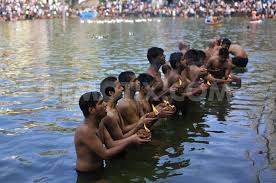 Most human gods, however, seem to have been, in the beginning, merely idealized dead men. The appearance of the dead in dreams was enough to establish the worship of the dead, for worship, if not the child, is at least the brother, of fear. Men who had been powerful during life, and therefore had been feared, were especially likely to be worshiped after their death. Among several primitive peoples the word for god actually meant “a dead man”; even today the English word spirit and the German word Geist mean both ghost and soul. The Greeks invoked their dead precisely as the Christians were to invoke the saints. So strong was the belief- first generated in dreams in the continued life of the dead, that primitive men sometimes sent messages to them in the most literal way; in one tribe the chief, to convey such a letter, recited it verbally to a slave, and then cut off his head for special delivery; if the chief forgot something he sent another decapitated slave as a postscript.
Most human gods, however, seem to have been, in the beginning, merely idealized dead men. The appearance of the dead in dreams was enough to establish the worship of the dead, for worship, if not the child, is at least the brother, of fear. Men who had been powerful during life, and therefore had been feared, were especially likely to be worshiped after their death. Among several primitive peoples the word for god actually meant “a dead man”; even today the English word spirit and the German word Geist mean both ghost and soul. The Greeks invoked their dead precisely as the Christians were to invoke the saints. So strong was the belief- first generated in dreams in the continued life of the dead, that primitive men sometimes sent messages to them in the most literal way; in one tribe the chief, to convey such a letter, recited it verbally to a slave, and then cut off his head for special delivery; if the chief forgot something he sent another decapitated slave as a postscript.
Gradually the cult of the ghost became the worship of ancestors. All the dead were feared, and had to be propitiated, lest they should curse and blight the lives of the living. This ancestor-worship was so well adapted to promote social authority and continuity, conservatism and order, that it soon spread to every region of the earth. It flourished in Egypt, Greece and Rome and India, and survives vigorously in China and Japan today; many people worship ancestors but no god. ( Relics of ancestor-worship may be found among ourselves in our care and visitation of graves, and our masses and prayers for the dead.)
The institution held the family powerfully together despite the hostility of successive generations, and provided an invisible structure for many early societies. And just as compulsion grew into conscience, so fear graduated into love; the ritual of ancestor- worship, probably generated by terror, later aroused the sentiment of awe, and finally developed piety and devotion. It is the tendency of gods to begin as ogres and to end as loving fathers; the idol passes into an ideal as the growing security, peacefulness and moral sense of the worshipers pacify and transform the features of their once ferocious deities. The slow progress of civilization is reflected in the tardy amiability of the gods.
The idea of a human god was a late step in a long development; it was slowly differentiated, through many stages, out of the conception of an ocean or multitude of spirits and ghosts surrounding and inhabiting everything. From the fear and worship of vague and formless spirits men seem to have passed to adoration of celestial, vegetative and sexual powers, then to reverence for animals, and worship of ancestors. The notion of God as Father was probably derived from ancestor-worship; it meant originally that men had been physically begotten by the gods. In primitive theology there is no sharp or generic distinction between gods and men; to the early Greeks, for example, their gods were ancestors, and their ancestors were gods. A further development came when, out of the medley of ancestors, certain men and women who had been especially distinguished were singled out for clearer deification; so the greater kings became gods, sometimes even before their death. But with this development we reach the historic civilizations.
REFERANCES
A.LLEN, GRANT: Evolution of the Idea of God. New York, 1897.
BRIFFAULT, ROBERT: The Mothers. 3V. New York, 1927.
CARPENTER, EDWARD: Pagan and Christian Creeds. New York, 1920.
DE MORGAN, JACQUES: Prehistoric Man. New York, 1925.
DURCKHEIM, EMILE: The Elementary Forms of the Religious Life. New
FRAZER, R. W.: Literary History of India. London, 1920.
FREUD, S.: Totem and Taboo. Leipzig, 1913.
JUNG, C. G.: Psychology of the Unconscious. New York, 1916
REINACH, S.: Orpheus: A History of Religions. New York, 1909 and 1930.
SMITH, W. ROBERTSON: The Religion of the Semites. New York, 1889.
SPENCER, HERBERT: Principles of Sociology. 3V. New York, 1910.
WILL DURANT: Our Oriental Heritage, Simon and Schuster, New York,1954
